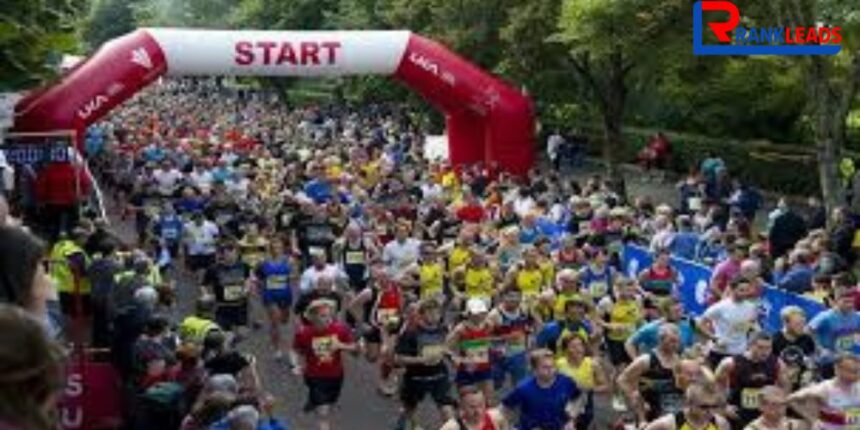Running a 10K race is a popular athletic goal for many fitness enthusiasts, and it is often seen as a benchmark for individuals looking to challenge their endurance or achieve a personal fitness milestone. But, for those not familiar with the metric system or those living in countries that primarily use miles, the conversion between kilometers and miles may seem a bit confusing. In this article, we will explore everything you need to know about a 10K in miles, including how to convert 10 kilometers to miles, its significance in running, and tips on how to train for a 10K race. We will also dive into the broader context of 10K races and how they fit into the world of running and fitness.
What is a 10K Race?
Before delving into the conversion, let’s first understand what a 10K race is. A 10K race, short for 10 kilometers, is a running event that covers a distance of 10,000 meters. It is considered one of the most common race distances for both beginner and intermediate runners. The 10K race strikes a balance between endurance and speed, making it an ideal challenge for those looking to push their limits without committing to the extreme distance of a marathon (26.2 miles or 42.195 kilometers).
Many major cities around the world host 10K races as part of their annual athletic events, and runners of all levels participate to improve their performance, set personal records, or simply complete the race for fun and fitness.
How to Convert 10K to Miles?
Now, let’s address the key question: How many miles is 10K? To convert 10 kilometers to miles, we need to use a standard conversion factor. The conversion from kilometers to miles is approximately:
1 kilometer = 0.621371 miles
So, to calculate how many miles 10 kilometers equals, we can multiply the number of kilometers (10) by the conversion factor (0.621371):
10 kilometers × 0.621371 miles/km = 6.21371 miles
Therefore, 10K is approximately 6.21 miles.
Why is 10K Such a Popular Distance?

A 10K race is popular for a variety of reasons. It is a perfect race for runners looking to challenge themselves without the immense physical demands of longer races, such as the marathon. Let’s take a closer look at why 10K events are so appealing.
1. Accessible for All Fitness Levels
Whether you are a beginner or an experienced runner, a 10K race is a manageable distance for most people. For beginners, completing a 10K can be a huge achievement, and for seasoned runners, it provides an opportunity to test speed and endurance.
2. Time-Efficient Training
Training for a 10K is less time-consuming compared to preparing for a marathon. A runner can train effectively for a 10K race in about 8 to 12 weeks, which makes it a more approachable goal for people with busy schedules.
3. A Competitive Race
Many runners enjoy the challenge of a 10K because it’s fast-paced, requiring a combination of speed and endurance. Unlike longer races, 10K runners often compete in a more dynamic environment, where tactics, pacing, and timing are crucial for achieving a personal best.
4. Variety of Events
Across the globe, there are numerous 10K events ranging from casual charity runs to highly competitive races. This means runners can find a 10K event to suit their personal goals, whether that be running for fun, supporting a cause, or striving for a personal best time.
Preparing for a 10K: Training Tips

Training for a 10K requires a mix of strategies to build both speed and endurance. The following training tips can help you successfully prepare for a 10K race, whether you are a beginner or a more experienced runner.
1. Set Realistic Goals
It’s important to set both short-term and long-term goals for your training. If you are a beginner, your first goal might be to complete the race. For more advanced runners, setting a specific time goal could be a motivating factor.
2. Build a Base
Before diving into intense training, it’s essential to build a solid foundation of fitness. This includes gradually increasing your running distance, focusing on consistency, and establishing a weekly running routine.
3. Include Speed Workouts
To improve your speed for a 10K, incorporate speed workouts into your training plan. These can include interval training, tempo runs, and hill workouts, all designed to increase your pace and stamina.
4. Focus on Endurance
While speed is essential for a 10K, endurance is just as important. Gradually increase the length of your weekly long runs to build endurance. This will help you maintain a steady pace during the race and avoid fatigue in the later kilometers.
5. Cross-Train and Strengthen Your Body
Strength training and cross-training can help improve overall fitness and reduce the risk of injury. Activities like cycling, swimming, or strength exercises for your legs, core, and arms will complement your running and make you a stronger athlete.
6. Taper Before Race Day
The last few weeks before your 10K race should involve a tapering period, where you reduce the intensity and volume of your workouts. This allows your body to recover and perform at its best on race day.
Common 10K Race Strategies
There are several strategies runners can employ to successfully complete a 10K race and even achieve personal bests. Some common race strategies include:
1. Pacing Strategy
Pacing is crucial in a 10K. Running too fast in the early kilometers can lead to fatigue later on, while running too slowly may prevent you from achieving your desired time. Many runners aim to start at a comfortable pace and gradually increase their speed as they approach the final few kilometers.
2. Negative Splits
A negative split is when you run the second half of the race faster than the first half. This strategy can be effective for a 10K because it allows you to conserve energy early in the race and build momentum towards the end.
3. Mental Focus
A 10K race may feel long, but with mental focus, you can push through the challenge. Break the race into smaller sections mentally, such as aiming to complete the first 5K at a steady pace, then focusing on the last 5K as a sprint to the finish line.
4. Stay Hydrated
Even though a 10K is relatively short, hydration is still important. Make sure to drink water before and after the race, and if the race conditions are particularly hot, consider taking small sips of water or sports drinks during the race.
How to Run a 10K Race
If you’re new to 10K races, it’s natural to feel a bit nervous before the event. Here are some steps you can take to ensure that you’re prepared and ready to perform your best on race day:
1. Check Your Gear
Before race day, make sure you have comfortable shoes, proper running attire, and any other gear you may need, such as a hat, running watch, or energy gels. Test your gear during your training to ensure everything fits well and doesn’t cause discomfort.
2. Arrive Early
On race day, arrive early enough to check in, warm up, and mentally prepare for the race. Arriving at least an hour before the start time will give you plenty of time to settle in and reduce any pre-race anxiety.
3. Warm-Up Properly
A good warm-up is essential to prepare your body for the physical demands of the race. Spend at least 10 to 15 minutes doing light aerobic exercises, such as jogging or brisk walking, followed by dynamic stretches to activate your muscles.
4. Enjoy the Experience
While it’s easy to get caught up in trying to achieve a personal best, remember that running a 10K should be enjoyable. Take in the atmosphere, cheer on your fellow participants, and celebrate completing the race, no matter the outcome.
Conclusion: The Significance of 10K in Miles
In summary, a 10K race is a popular and achievable event for many runners and fitness enthusiasts. For those accustomed to miles, a 10K is approximately 6.21 miles, and this distance strikes a perfect balance between challenging oneself and achieving a satisfying accomplishment. Whether you’re looking to improve your running speed, take on a new fitness goal, or participate in a fun community event, a 10K race offers an accessible and fulfilling challenge for all fitness levels.
Through consistent training, effective race strategies, and the right mental preparation, you can successfully run a 10K and experience the joy and sense of achievement that comes with completing this popular race distance. So, lace up your shoes, hit the pavement, and enjoy the journey to your first (or fastest) 10K!






